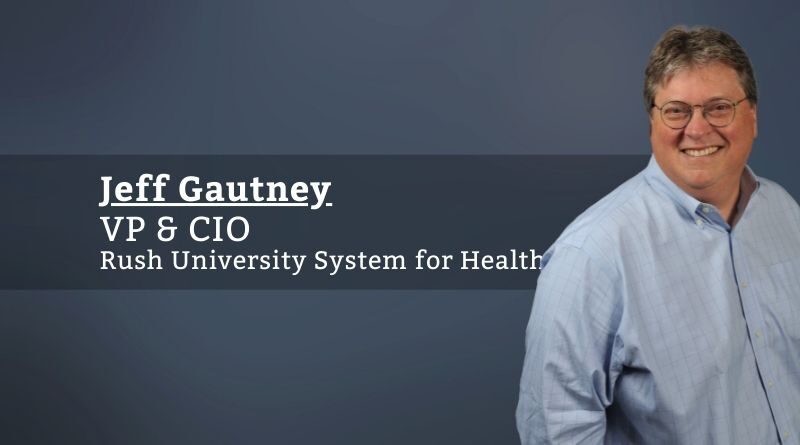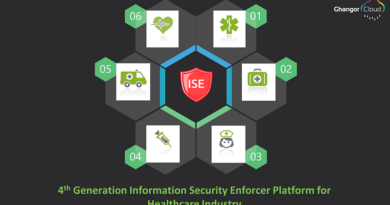Application Rationalization in Healthcare: A Marathon, Not A Sprint
By Jeff Gautney, VP & CIO, Rush University System for Health
Application rationalization is a term thrown around often by those in IT – and its application in health care is paramount to supporting continued efforts to keep up in an increasingly digital world.
Why your organization must invest time in application rationalization
Health systems are challenged today more than ever to find talented IT resources to support increasingly complex environments. The proliferation of software solutions to address health care challenges has grown while the pool of available talent has continued to shrink. As these trends continue through the next decade, the organizations that can manage this complexity and optimize systems to support and integrate will be most successful.
Siloed solutions within a health care system can increase costs and decrease innovation as it relates to digital transformation.
Application rationalization defined
Simply put, application rationalization is reviewing current applications in use and reducing duplicate and old applications that no longer serve the organization.
Application rationalization requires a detailed look at workflows, applications, staffing and budgets, in addition to cybersecurity risks.
It requires the organization to not just stop using an application, but to archive and provide access to the data from the application, manage licensing and legal issues and migrate possibly reluctant users to new platforms. It’s challenging, but worth it — effective application rationalization is the key to moving towards a less analog and more digital industry.
Why is application rationalization important?
There are four reasons why application rationalization in health care is important:
- Resiliency: Complex environments are harder to manage. Simplifying their environment allows health systems to be agile and resilient.
- Talent: Good talent in IT is hard to find, and finding enough people to support complicated environments is challenging. A simpler environment means fewer people are needed to support it.
- Cost: It’s expensive to pay multiple vendors for many applications. When you have a simpler environment, you pay less.
- Cybersecurity: Having more applications gives bad actors more opportunities to commit ransomware or spyware attacks.
Rush University System for Health is a medium-sized health care system that is prioritizing digital transformation. Being medium-sized means that we need to stay agile and smart about our investments to stay ahead of the curve and prioritize our digital transformation work.
Bigger hospital systems may have more freedom with what they can afford to cut or not cut, but cost-cutting is an ever-present topic in healthcare that is applicable no matter the size of your health system. Ensuring robust licensing, support, security and talent can drain resources for any health system, so it’s important to be smart and not absorb cost implications for multiple applications that do the same thing.
Application rationalization may sound like you can just hire a consulting firm and be done with it —but it’s actually very complicated and requires a massive communications and change management effort to accomplish. For every system, you need to know what the application is, how it’s used within your organization, what you’ll do with its data, how to migrate to the new application, how to retire the old one and the terms and timing of contractual commitments that you have with the old and target application vendors.
Once you decide what is going to change, you need to communicate to end-users and implement the new enterprise solution. Most importantly, you can’t forget to de-commission old applications. You’ll be hard-pressed to get the benefits of application rationalization if you don’t do this.
Different approaches to application rationalization
There are two complementary approaches to application rationalization timing: you can let business needs drive it or you can let the expiration of support agreements drive it.
Letting business needs drive it may mean buying out of some existing agreements, while letting the expiration of agreements drive it may be a smarter financial move, but it may take longer.
Application rationalization doesn’t always move at the pace you wish it would, but it’s important to be realistic about what’s possible. Letting agreements expire may seem like the “less sexy” option, but it’s often a better option than buying out of an agreement.
It’s important to have a plan, understand your opportunities and not miss windows where you can evaluate an application and its usefulness. As a CIO, it would be inefficient for me to unconsciously approve an extension of a contract and push out the opportunity for rationalization even further.
How application rationalization connects to digital transformation
As we work towards a more digital world and push forward digital transformation agendas, being agile is important, and so is having a reliable foundation on which to build digital relationships.
Even more important is the need to not have siloed solutions. Siloed solutions within a health care system can increase costs and decrease innovation as it relates to digital transformation.
One example of digital transformation work at Rush is our efforts to have a centralized CRM. We have multiple departments with CRM solutions, but they’re not always as integrated as we’d like, and do not provide a common view of our customers. We have a unique strength as a teaching hospital in that we are able to connect with clinical staff at the beginning of their journey — but to help people through a digital journey, it’s vital to have a universal understanding of their preferences and their digital experience. Rationalizing a CRM is one way to help that work along.
In that respect, it’s easy to see how it benefits us to have a common system of which everyone has deeper expertise than multiple systems where knowledge is spread across multiple departments.
We still have an urgent need to be efficient and effective in the applications we choose. We can’t get complacent and lose opportunities to rationalize and improve. The demand in complex health care settings is changing, and we need to change with it.



